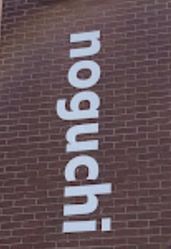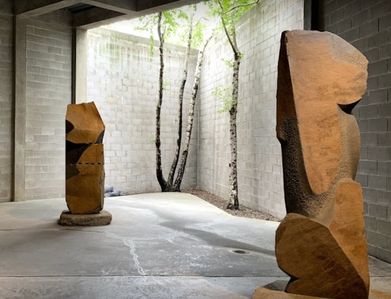
The Noguchi Museum is the first museum in the U.S. to be built, designed, and installed by a living artist (Isamu Noguchi) to showcase their work. This beautiful museum is located in Long Island City, Queens, in an attractive, repurposed 1920s industrial red brick building. It features a concrete pavilion designed and built by Isamu Noguchi and Shoji Sadao in the 1980s.
Here’s everything you need to know if you plan to visit the Noguchi Museum:
An Overview of the Museum
Formerly known as the Isamu Noguchi Garden Museum, the category-defying Isamu Noguchi founded his museum in 1985. The purpose of building this museum was to show Noguchi’s work in a context that suits his vision. The museum is a two-story building with around 27,000 square feet of exhibition space. The Noguchi Museum is widely regarded as one of Isamu Noguchi’s most noteworthy achievements.
This museum houses the world’s largest collection of Isamu Noguchi’s works, open-air and indoor galleries, and a striking outdoor sculpture garden. The Noguchi Museum is worth visiting because the art is often displayed without interpretations or barriers, allowing the visitors to introspect freely. It’s consistent with Noguchi’s idea of art being experiential.
History & the Man Behind the Building
Isamu Noguchi was inarguably one of the most prominent sculptors of the twentieth century. Noguchi spent his lifetime in artistic experimentation and created gardens, ceramics, sculptures, furniture designs, architecture, set designs, and landscapes. His work sits between dichotomies of modern and traditional and subtle and bold; he set an impressive standard of artistic reintegration.
Noguchi’s work incorporates many universal elements, from large-scale public works from Mexico to subtle in-brush techniques from china to the use of marble in Italy and the tranquil gardens and earthy ceramics of Japan. His art incorporated many materials, including marble, cast iron, stainless steel, bronze, granite, aluminum, and wood.
Isamu Noguchi eventually established his studio in Long Island City in 1961. By 1974, he had also purchased a vacant lot and an abandoned factory building across the street. Over the next decade, he transformed these neglected spaces into a haven where he could display his life’s work. The Isamu Noguchi Museum finally opened on May 11, 1985.
While the renovations were underway, the museum relocated for a short while to Sunnyside Queens. Several thematic exhibitions were held there, with Noguchi’s work as the primary focus. In 2004, the museum was given 501(c)(3) public charity status.
It was only operational seasonally until 1999, and significant building renovations were completed in 2004, after which the museum has been open to the public all year around. The primary mission of this museum is to advance the appreciation of Isamu Noguchi’s art and legacy. People visit the Noguchi Museum to grow their artistic endeavors by connecting with Noguchi’s art through active exhibitions, ongoing education programs, and more.
Because of the stabilization project, the museum got 12 new galleries and a gift shop. This year, the museum received another capital funding of $4.5 million. $1.5 million of this funding came from Mayor Eric Adams. The remaining $3 million came from Donovan Richards, the president of Queens Borough.
The museum will use this money to restore Noguchi’s 1959 home and studio. Another 2000 square feet building will also be added to the project. This new two-story building will stand adjacent to Noguchi’s studio and house some valuable archival material.

What to Expect from a Visit
The Noguchi Museum houses the artist’s permanent installations and temporary exhibitions, exploring his work, collaborations, and enduring influence on contemporary artists. You can find a comprehensive selection of Noguchi’s sculptures, drawings, models, personal possessions, and more.
Here’s what you can expect from your visit to the Noguchi Museum:
The Tree of Heaven
Until March 2008, the Tree of Heaven, aka Ailanthus altissima, was a centerpiece in the museum’s garden. Isami had let the tree stay when he purchased the place. It wouldn’t be unfair to say that the museum built the sculpture garden around the tree.
By 2008, the tree started dying, and the museum staff feared it would crash into the building. The museum hired the Detroit Tree of Heaven Woodshop to prevent such an occurrence. This woodshop is an artist collective. The collective cut down the tree and used its wood to make benches and other furniture pieces in the museum.
The Indoor/Outdoor Gallery
You will enter the museum through Area 1, the indoor/outdoor gallery. This space combines a variety of covered, open-air spaces that support a building, including a portico, peristyle, and loggia. The corrugated steel ceiling and concrete block walls highlight the industrial history of the lot. Noguchi featured his late-career basalt works in this gallery, initiating the museum’s permanent collection in reverse chronology.
The Sculpted Garden
The sculpted garden is the epitome of Noguchi’s exploration of Japanese gardens. It features his renowned sculptures and specifically chosen plantings native to Japan and the U.S. The carefully selected shrubs, vines, and trees offer a reflective space enjoyable across all seasons.
The First Floor Galleries
These galleries contain Noguchi’s stonework, including his marble work from the 1960s to the granite and basal works from the 1980s. These permanent installations reflect Noguchi’s choices and how he wanted people to interact with his work.
The Second Floor Galleries
These galleries feature alternating exhibitions that draw from Isamu Noguchi’s archive and the museum’s collection. The art highlights Noguchi’s category-defying themes, and the floor offers a platform for artistic projects carrying Noguchi’s enduring influence.
The Floating Galleries
This space is situated above Area 1, and it floats directly atop the corrugated steel ceiling of the indoor/outdoor gallery. This space features windows and a skylight that opens onto the garden and Vernon Boulevard.
The Museum Shop
Lastly, you can visit the Noguchi Museum Shop. This music-filled room showcases more than 70 of Noguchi’s Akari light sculptures, his art, design, and publications, and a shop for designers and artists whose work reflects Noguchi’s influence.
Noguchi Museum Tours
The Noguchi Museum offers educator-led tours daily at 2 pm. These tours are conversational and include an introduction to the life and vision of Isamu Noguchi and an exploration of selected works in the museum’s collection. The educator-led Noguchi Museum tours are limited to ten guests.
The museum also offers access tours designed to meet the needs of specific communities of all ages. These tours provide accessible entry points into Noguchi’s work with the aid of verbal, visual, and tactile demonstrations. Moreover, you can book guided group tours for up to 15 people. These tours will encourage you to share your observations of the selected artwork. They last about an hour, and you can get them in English, Spanish, and Japanese.
The Museum Timings & Fees
The Noguchi Museum remains open for visitors from Wednesday to Sunday (11 am – 6 pm) and is closed on Monday and Tuesday. Even though you can explore the museum without a reservation, entry for walk-ins is based on museum capacity. You can avoid waiting for your turn on the weekends by reversing your visit in advance.
The general admission fee for the museum is $12, while students and seniors get a 50% discount. Moreover, admissions are free on the first Friday of every month. The museum is wheelchair-accessible, and you can find a wheelchair and portable seating at the entry desk. It also welcomes service animals.
The Tree of Heaven
Until March 2008, the Tree of Heaven, aka Ailanthus altissima, was a centerpiece in the museum’s garden. Isami had let the tree stay when he purchased the place. It wouldn’t be unfair to say that the museum built the sculpture garden around the tree.
By 2008, the tree started dying, and the museum staff feared it would crash into the building. The museum hired the Detroit Tree of Heaven Woodshop to prevent such an occurrence. This woodshop is an artist collective. The collective cut down the tree and used its wood to make benches and other furniture pieces in the museum.
The Bottom Line
The Noguchi Museum is a must-visit art museum in New York State for people who love the blend of contemporary and traditional art practices and the amalgamation of several universal cultural practices. Touring the museum and exploring Noguchi’s art will help you develop a newfound appreciation for his impressive artistic mind and creation.
